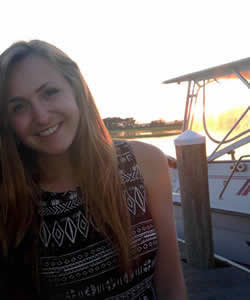On October 25, Argentina held its first round of the national election to determine who will replace the political Peronist powerhouse, President Cristina Fernández de Kirchner. She took office in 2007 after taking the reins from her husband Néstor, who passed away in 2010. Under the 12-year rule of the Kirchners, Argentina’s foreign and domestic policies have been characterized by a substantial shift to the left with increased welfare spending and energy subsidies, as well as deteriorating diplomatic relations with the United States. The country is also suffering from serious economic stagnation. Although it is the third largest economy in Latin America, it faces falling export prices, double-digit inflation, a slow-growing GDP, and an overvalued peso. Although Kirchner’s supporters—especially the younger generation, rural workers, and nationalists—ardently defend her presidency, there are many Argentines who are looking to this election as an opportunity for a drastic change in the country’s politics.
Ever since I first arrived in Argentina at the end of the July, I have been constantly greeted with the smiling faces of the new presidential hopefuls whose political posters are strategically plastered on every street corner, subte wall, and bus stop. Although 15 different candidates participated in the August 9 primary, the race has now been narrowed down to two major contenders: Daniel Scioli, the governor of the Buenos Aires province, and Mauricio Macri, the mayor of the city of Buenos Aires.
The two faced off in the October 25 election, with Scioli leading the exit polls with 36 percent and Macri slightly behind with 34 percent. However, because neither candidate secured the necessary 45 percent of the vote (or the minimum of 40 percent with a 10-point lead), a run-off will be held in November 22 to determine the winner. Interestingly, this is also the first time in Argentine history that an election will be decided in a second round vote. Scioli, who is a part of the current president’s Peronist Front for Victory alliance, does not seem to be promising substantial political or economic change; however, he is considered the favored candidate as he has received outward backing from Kirchner. Macri, an economic liberal, has instead promised “institutional shock” with currency devaluation and removal of capital controls. In the eyes of his supporters, his candidacy also represents the prospect of a more accountable government with a stronger central bank and judiciary.
As intriguing as it is to keep up with the public reaction to the US presidential race, observing the Argentine election process as a foreigner—especially a norteamericana—has been even more of an enlightening experience as I learn about the dynamics between the citizens and government of a different country. On the day of the elections when I was taking a cab ride home from the airport, for example, a giant Scioli sign on the side of the highway caught my eye. Curiously, I asked my cab driver what he thought of the presidential candidate. He scoffed bitterly and proceeded to describe, in Spanish, how his country has become too much like Venezuela under Kirchner and that Scioli would do nothing to change that. He then voiced his feelings of distrust towards the electoral process as a whole, saying that the results "van a ser una trampa, una mentira": they will be a trap, a lie.
The blatant cynicism demonstrated by this cab driver towards the prospect of a “more of the same” successor is reminiscent of the frustration felt in the United States against the incessant partisan gridlock of the political elite. Despite the tangible differences in party system, political orientation, and economic policy of the two countries, both have shown an obvious desire to transcend the status quo politics of recent years. Unfortunately, I am still 12 months away from seeing whether or not this will materialize in the United States. But come November 22, I, along with the rest of Argentina, will finally know the victor of this intense presidential race—and if the feeling of change in the air is not from the onset of the spring, but from a truly transformative election season.

